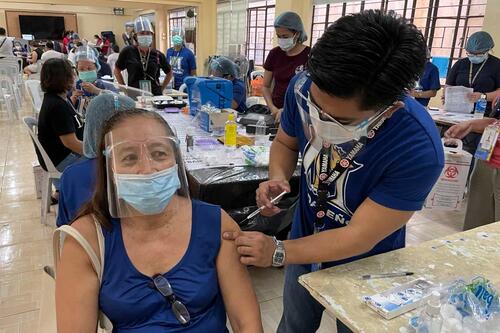Thousands Jam (into) Philippine Vaccination Sites Over False News

Thousands Jam (into) Philippine Vaccination Sites Over False News
Preceding a lockdown placed on Metropolitan Manila and three nearby regions due to the spike in Covid infections resulting from the new delta variant, large crowds inundated vaccination centers in Manila, Las Pinas, and Antipolo as misinformation spread on social media that unvaccinated residents would either be prohibited from leaving their homes (to go to work) or deprived of the promised 1,000 pesos aid, equivalent to $20 USD. Despite social distancing restrictions, thousands lined up for several blocks – having ~22,000 people gathering in Manila alone before dawn. Signs of possible anarchy, such as “rowdily removing barricades” and “snarling traffic”, revealed the urgency placed in the task and the trust that their sourced informant (social media) was truthful and accurate. The situation became so bad in some areas that police had to stop vaccinations and ask crowds to return home.
Many partly blamed President Rodrigo Duterte’s brazenly brash warnings to the public in the prior week. Although no law-enforced restrictions had been put in place, Duterte cautioned unvaccinated residents about their inability to leave their households as a safeguard against further spread of the delta variant. Statements were later made to clarify the situation, stressing that unvaccinated residents could, in fact, venture out in case of medical emergency and (with village permission) go buy food, medicine, and/or essential items. Additionally, officials urged the public to follow verified government announcements, not social media news, in the future.
The rapid proliferation of misinformation that took place over one day demonstrates how the power and impact of social media in people’s lives, especially in Southeast Asian countries where the public may believe and share information before ensuring that its source been verified and is accurate. In this example, the result was a positive externality (more vaccinations) but consider if the sender acted with more malicious intent (like say, gathering a bunch of people to massacre them). In examining how modernity has impacted and continues to shape the realities within Southeast Asia, it may be important to consider what tools are available and how to best utilize/monitor them.